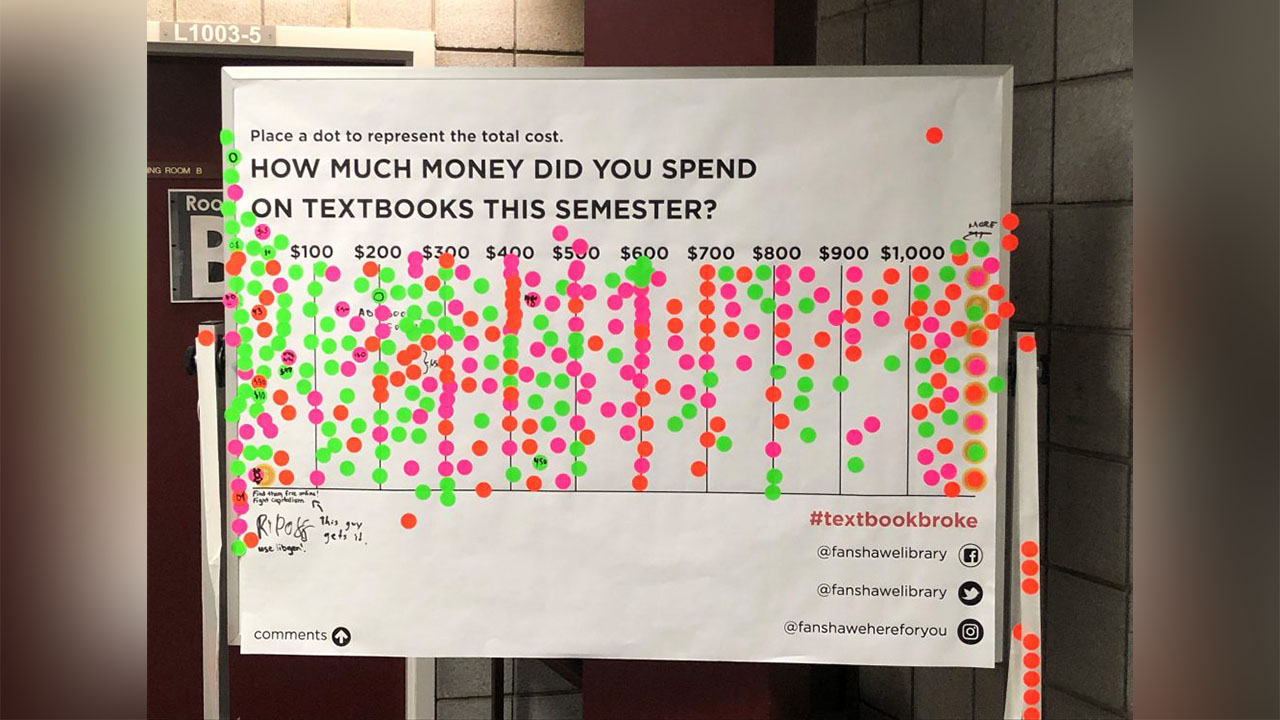OER making paid course materials a thing of the past
 CREDIT: FANSHAWE OER DESIGN STUDIO
CREDIT: FANSHAWE OER DESIGN STUDIOOER can help save students money on textbooks, which some students report spending $1,000 per semester on.
Open education resources (OER) are making it easier for students to access course materials without spending hundreds or even thousands of dollars on textbooks.
Shauna Roch, Project Lead of the OER Design Studio at Fanshawe College has been developing open education resources at the college since before the start of the pandemic. She first noticed a need for online resources while working as an online coordinator for Fanshawe’s business school.
“My role was really to support faculty and help to develop really good online classes and experiences for students,” Roch said. “I also found that I needed to kind of look at the college system as a whole and say, ‘How are we helping online students or not helping them and what can we do to kind of fix that?’”
Roch now works full time with the Design Studio, which operates through the Library Learning Commons. Since its inception, Fanshawe’s OER Design Studio has completed 63 projects, provided a total of $3.4 million in savings annually for students, and has hired 18 students to work in the studio assisting in creating the course materials.
According to Roch, access to these free course materials has both a financial benefit and an accessibility benefit.
“For some people, online learning can really be beneficial,” Roch said. “And so it’s leveraging that technology that exists just to make it accessible for everyone and make it equitable. It’s not to say, one thing works for all, but it’s to have kind of that smorgasbord of options.”
Roch also said she’s received feedback from students who appreciate that they can access the materials from anywhere.
“Students love the fact that it’s just a link and they can access it anywhere, any time,” Roch said. “They can sit on the bus and pull it up on their phone and read as they’re on their way to school. They can download it if they need to and get a printed version. And so for that accessibility piece, it’s really easy.”
Perhaps the most attractive aspect of OER for students is the elimination of costly textbooks, which some students report spending over $1,000 per semester on.
In spite of the positives, Roch said open education has been slow to take hold, in part because presently, educators are personally responsible for providing content and working with the Design Studio to create materials.
“So faculty or even…college staff, they’re seen as the subject matter expert, and so they’re providing their content,” Roch explained. “And then we are responsible for doing the publishing of that.”
The Design Studio funds the development time, so faculty and staff are compensated for time spent creating their course materials. In some cases, Roch said students have also helped in the development process.
“In some project cases, we’ve had current students working on books that they had in courses previously in their program, and so they have that student experience,” she said. “So it becomes this collaborative project, which is beautiful.”
Through OER’s open pedagogy, students can also have their essays and coursework published openly to be shared with future employers, their families or even future students.
While Roch said there is still a lot that must change before open education becomes the norm, having the OER Design Studio be a permanent fixture at the college has been a huge help. Roch said in an ideal world, OER would be seen as a viable replacement for traditional textbooks wherever possible.
“It would be nice if we could just at least reduce some of the paid resources where possible because we know students are struggling financially. And this could be an easy win, something to help them.”

















